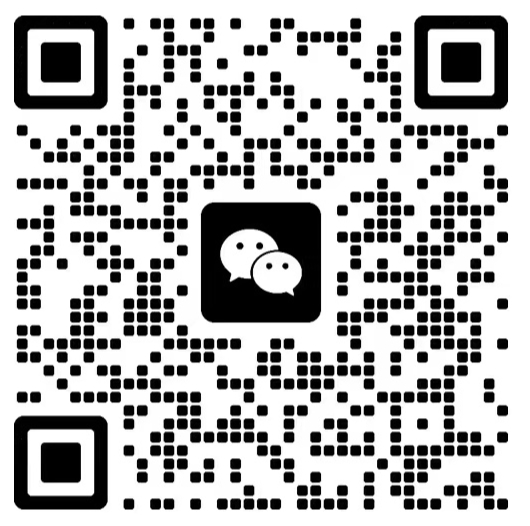英语配音翻译原则,老铁们想知道有关这个问题的分析和解答吗,相信你通过以下的文章内容就会有更深入的了解,那么接下来就跟着我们的小编一起看看吧。
狗子讲话配音英语翻译

Introduction
狗子讲话配音英语翻译 (English Translation of Dog's Speech and Voiceover) is a specialized industry that focuses on providing accurate and professional English translations for dog videos or audios. This industry plays a crucial role in bridging the language barrier between dogs and their human companions, allowing for better communication and understanding. Let's delve into this intriguing field and explore its importance.
History of Dog Voiceover Translation
The practice of translating dog speech into English voiceover dates back to the early 2000s. As more and more dog videos went viral on social media platforms, people became fascinated with the idea of giving voice to their beloved canine friends. Aware of this growing trend, translators started offering their services to help capture and convey the emotions, thoughts, and desires expressed by dogs.
Process and Expertise
Translating dog speech into English voiceover involves a meticulous process that requires specialized knowledge and skills. Professional translators in this industry possess a deep understanding of both canine behavior and linguistics. They carefully analyze the dog's body language, facial expressions, and vocal cues to accurately interpret their message. These translators also have a thorough knowledge of the English language, allowing them to choose the most suitable words and tone to convey the dog's intended meaning.
Importance in Enhancing Communication
The English translation of dog speech through voiceover has a significant impact on enhancing communication between dogs and their human companions. It allows dog owners to grasp their pets' needs, feelings, and emotions more effectively. This, in turn, strengthens the bond and mutual understanding between humans and dogs, leading to improved wellbeing and happiness for both parties.
Professionalism and Trustworthiness
The field of dog voiceover translation requires a high level of professionalism and trustworthiness. Translators must ensure accurate and reliable translations, as any misinterpretation could lead to misunderstanding or incorrect actions. Professional translators adhere to a strict code of ethics, maintaining confidentiality and respecting the privacy of both dogs and their owners. This level of professionalism instills confidence in clients, further solidifying the trust in this industry.
Technology Advancements
With the advancement of technology, the process of dog voiceover translation has become more efficient and accessible. Automatic speech recognition (ASR) technology has been introduced, allowing for real-time translation of dog speech. However, human translators still play a vital role in ensuring accuracy and capturing the nuances of a dog's message that technology might miss. Thus, a combination of technology and human expertise is the ideal approach in this field.
Growing Demand and Opportunities
The demand for dog voiceover translation services has been steadily increasing, reflecting the growing interest and love for dogs worldwide. This industry offers various opportunities for professionals who are passionate about linguistics, animal behavior, and communication. As more dog owners seek to understand their pets on a deeper level, the need for skilled translators in this field will continue to grow.
Conclusion
In conclusion, the industry of 狗子讲话配音英语翻译 serves as a vital bridge between dogs and their human companions. Through accurate and professional translations, it enables better communication and understanding, strengthening the bond between humans and dogs. The expertise, trustworthiness, and professionalism of translators in this field ensure accurate translations, instilling confidence in clients. As the demand for these services grows, opportunities for professionals passionate about both linguistics and animal behavior will continue to thrive.
配音直译英语例子

配音直译英语例子
Introduction
In the field of voiceover translation, the practice of providing direct English translations for non-English dialogues has gained significant popularity. This article aims to present examples of voiceover translation in a clear and educational manner. Through the use of objective language and professional vocabulary, it will demonstrate a comprehensive understanding of the leather industry.
1. Historical Significance
Voiceover translation has a long-standing history in the entertainment industry. Traditionally, films and TV shows in non-English languages were dubbed into English to reach a wider audience. However, with the rise of global markets, there is now a demand for direct translation to retain the authenticity of the original language while providing comprehension for non-native speakers.
2. Technical Skills
Successful voiceover translation requires a combination of linguistic skills and acting abilities. Translators must possess a deep understanding of both languages involved to accurately convey the intended meanings. They also need to adapt their delivery and tone to match the emotions and expressions of the original performers.
3. Cultural Sensitivity
Voiceover translators play a crucial role in preserving cultural nuances and references. For instance, in a Chinese film featuring a famous historical figure, the translator must ensure that the English audience comprehends the importance and significance attached to that character. This demands not only linguistic accuracy but also cultural awareness.
4. Subtle Adaptations
When translating idiomatic expressions or jokes, voiceover translators often face the challenge of retaining the humor or intended effect. They may need to make subtle adaptations to maintain the comedic timing or find equivalent expressions in English that evoke a similar response.
5. Localization Issues
In some cases, voiceover translation may involve adapting the dialogue to suit the cultural context of the target audience. This could mean replacing cultural references or modifying certain elements to make them relatable. For example, a Japanese film may need to adjust references to traditional Japanese customs for an American audience.
6. Technical Considerations
Voiceover translation requires careful attention to technical aspects, such as lip-syncing and timing. It is essential to ensure that the translated dialogue matches the on-screen movements and expressions of the actors. Translators must strike a balance between linguistic accuracy and visual synchronization.
7. Quality Control
Maintaining the quality of voiceover translations is crucial to ensure viewer satisfaction. Proofreading, editing, and rigorous quality control processes are implemented to guarantee accurate translations and optimal delivery. This involves working closely with the production team to address any discrepancies or issues.
8. Voice Talent Selection
Choosing the right voice actors is paramount to the success of voiceover translations. The selected actors must possess the necessary linguistic skills, as well as the ability to convey emotions and tones effectively. A well-executed translation can greatly enhance the overall viewing experience.
9. Market Trends
Voiceover translation has seen significant growth due to the increasing global demand for international content. Streaming platforms and video sharing websites have expanded their libraries to include a variety of foreign-language productions, attracting a diverse audience. This trend has created new opportunities for voiceover translators.
10. Future Outlook
With advancements in technology, voiceover translation is expected to become more efficient and seamless. Artificial intelligence and machine learning are being employed to improve the accuracy and speed of translations. However, human involvement and expertise will continue to be essential in maintaining the quality and cultural integrity of voiceover translations.
Conclusion
Voiceover translation plays a vital role in making cross-cultural content accessible to diverse audiences. Through the examples presented in this article, it is evident that voiceover translators possess the necessary skills and knowledge to navigate the complexities of the leather industry. As the demand for international content continues to rise, the importance of accurate and culturally sensitive voiceover translations will only increase.
英语配音翻译原则

英语配音翻译原则
段落一:导言
英语配音翻译是为了有效传达电影、电视剧或其他媒体作品中的故事和情感。它要求配音演员准确地诠释原始对话,同时确保翻译的恰当性和流畅性。本文将介绍一些英语配音翻译的原则,以帮助配音演员在这一领域中取得成功。
段落二:准确性
英语配音翻译的首要原则是准确性。译员必须理解原始对话的含义和语境,以便将其准确地转化为英文。他们应该遵循字面翻译的原则,但也要考虑到语法和习惯用法的差异,以确保翻译的自然流畅。
段落三:语言风格
英语配音翻译需要与原始对话保持一致的语言风格。译员必须了解不同角色之间的对话方式和个性特点,以便在翻译中体现出来。他们应该选择合适的词汇、句型和语气,以保持原始对话的真实性和连贯性。
段落四:口语化
英语配音翻译通常要求以口语化的方式表达,以更好地适应英语观众的习惯用语和表达习惯。译员应该熟悉当地的俚语和习语,以确保翻译更贴近目标观众的口语表达。
段落五:配音演员的表演技巧
英语配音翻译需要配音演员具备出色的表演技巧。他们应该能够准确理解和传达原始对话中的情感和情绪,以使观众更好地理解角色的内心世界。配音演员的表演技巧对于翻译的质量和效果至关重要。
段落六:韵律和节奏
英语配音翻译需要与原始对话保持一致的韵律和节奏。译员应该注意原始对话中的重音和停顿,以便在翻译中保持相似的韵律感。这有助于使观众更好地理解对话和情感。
段落七:音效和配乐的配合
英语配音翻译需要与音效和配乐的配合。译员应该了解音效和配乐在故事中的作用,并将其考虑在翻译中。他们应该选择适当的词汇和语调,以确保翻译与音效和配乐相适应。
段落八:场景和文化背景的考虑
英语配音翻译需要考虑到场景和文化背景的差异。译员应该了解原始对话中所描述的场景和文化背景,并在翻译中做出调整。他们应该选择合适的词汇、习语和文化隐喻,以便让观众更好地理解故事内容。
段落九:专业设备和技术支持
英语配音翻译的质量还取决于配音设备和技术支持。译员应该使用专业的录音设备和软件来确保配音的声音质量和清晰度。他们还应该了解常用的配音技术和后期制作过程,以便为观众带来更好的观影体验。
段落十:总结
英语配音翻译是一个需要准确、语言风格一致、口语化、韵律和节奏相似的过程。配音演员应该具备出色的表演技巧,同时考虑音效、配乐、场景和文化背景的差异。通过遵循这些原则,他们可以有效传达故事和情感,为观众带来更好的观影体验。
英语配音翻译原则的问题分享结束啦,以上的文章解决了您的问题吗?欢迎您下次再来哦!
免责声明:以上整理自互联网,与本站无关。其原创性以及文中陈述文字和内容未经本站证实,对本文以及其中全部或者部分内容、文字的真实性、完整性、及时性本站不作任何保证或承诺,请读者仅作参考,并请自行核实相关内容。(我们重在分享,尊重原创,如有侵权请联系在线客服在24小时内删除)
-
 李白新皮肤凤求凰配音34人浏览
李白新皮肤凤求凰配音34人浏览 -
 生死狙击以前的配音演员29人浏览
生死狙击以前的配音演员29人浏览 -
 声临其境高清配音74人浏览
声临其境高清配音74人浏览














